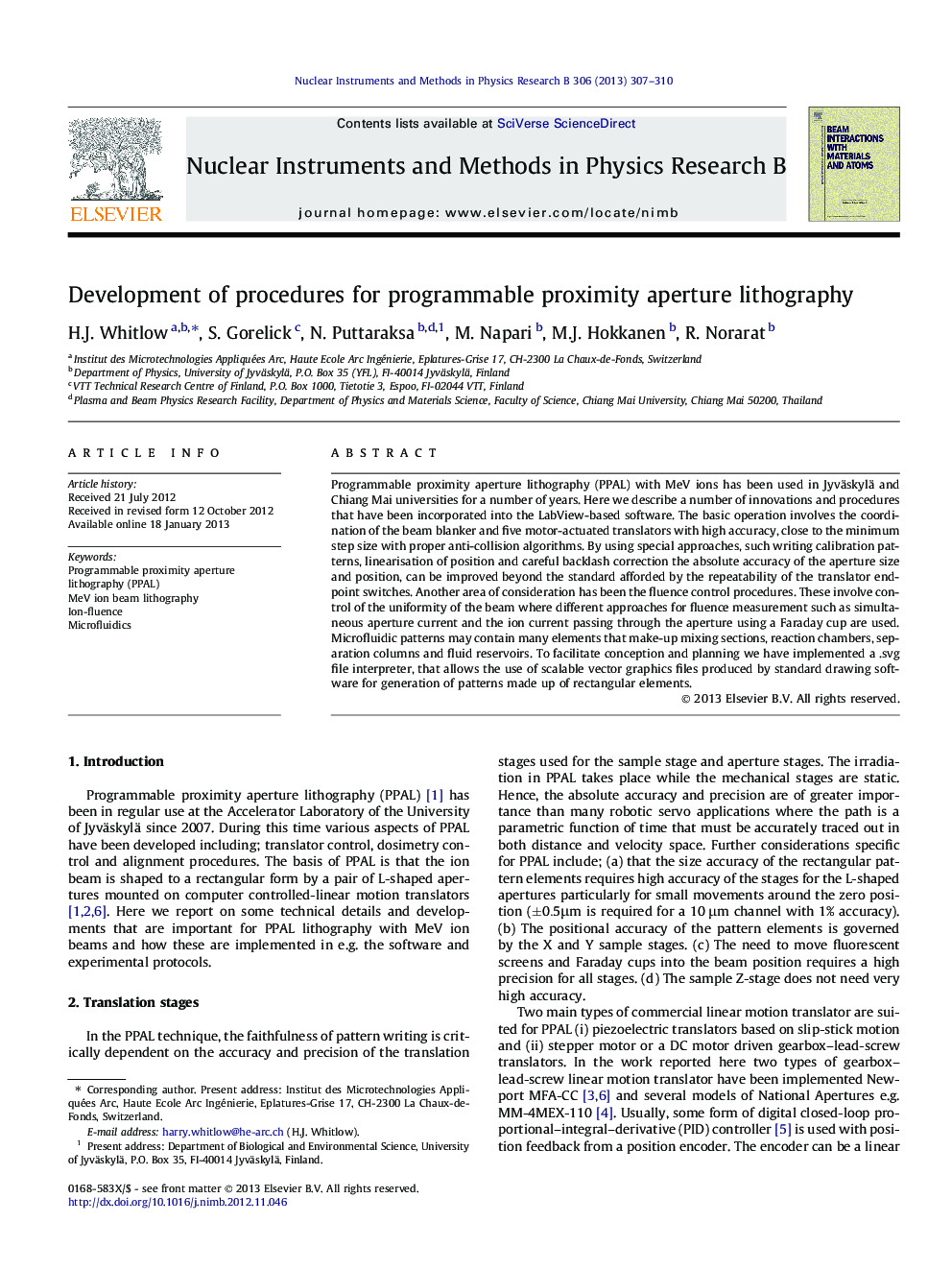| Article ID | Journal | Published Year | Pages | File Type |
|---|---|---|---|---|
| 8042808 | Nuclear Instruments and Methods in Physics Research Section B: Beam Interactions with Materials and Atoms | 2013 | 4 Pages |
Abstract
Programmable proximity aperture lithography (PPAL) with MeV ions has been used in Jyväskylä and Chiang Mai universities for a number of years. Here we describe a number of innovations and procedures that have been incorporated into the LabView-based software. The basic operation involves the coordination of the beam blanker and five motor-actuated translators with high accuracy, close to the minimum step size with proper anti-collision algorithms. By using special approaches, such writing calibration patterns, linearisation of position and careful backlash correction the absolute accuracy of the aperture size and position, can be improved beyond the standard afforded by the repeatability of the translator end-point switches. Another area of consideration has been the fluence control procedures. These involve control of the uniformity of the beam where different approaches for fluence measurement such as simultaneous aperture current and the ion current passing through the aperture using a Faraday cup are used. Microfluidic patterns may contain many elements that make-up mixing sections, reaction chambers, separation columns and fluid reservoirs. To facilitate conception and planning we have implemented a .svg file interpreter, that allows the use of scalable vector graphics files produced by standard drawing software for generation of patterns made up of rectangular elements.
Related Topics
Physical Sciences and Engineering
Materials Science
Surfaces, Coatings and Films
Authors
H.J. Whitlow, S. Gorelick, N. Puttaraksa, M. Napari, M.J. Hokkanen, R. Norarat,
